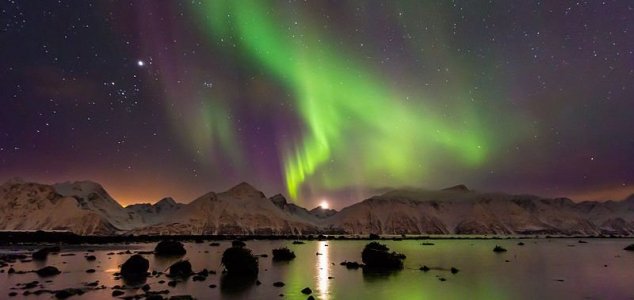Space & Astronomy
July 30, 2015 · 10 comments
10 comments

The Northern Lights as seen over Norway. Image Credit: CC BY 2.0 Carsten Frenzl
"Brown dwarfs span the gap between stars and planets and these results are yet more evidence that we need to think of brown dwarfs as beefed-up planets, rather than ‘failed stars''," said Dr Stuart Littlefair from the University of Sheffield.
The aurora display is produced when charged particles enter a planet's magnetic field and collide with the gas atoms in its atmosphere. In contrast to the Northern Lights here on Earth however the aurora on the brown dwarf star is a lot redder in color and thousands of times more intense.
"We're finding that brown dwarfs are not like small stars in terms of their magnetic activity; they're like giant planets with hugely powerful auroras," said Dr Gregg Hallinan.
Source: Independent | Comments (10)
Aurora discovered outside our solar system
By T.K. RandallJuly 30, 2015 ·
 10 comments
10 comments
The Northern Lights as seen over Norway. Image Credit: CC BY 2.0 Carsten Frenzl
A glow similar to the Northern Lights has been picked up around a brown dwarf star 20 light years away.
The discovery marks the first time that such a phenomenon has been observed outside of our own solar system and suggests that brown dwarfs are a lot more like planets than previously realized."Brown dwarfs span the gap between stars and planets and these results are yet more evidence that we need to think of brown dwarfs as beefed-up planets, rather than ‘failed stars''," said Dr Stuart Littlefair from the University of Sheffield.
Aurora found around brown dwarf beyond our Solar System:
http://t.co/cxcTpWvYBS pic.twitter.com/qsNtDV5WSj
— BBC Radio 4 Today (@BBCr4today) July 30, 2015The aurora display is produced when charged particles enter a planet's magnetic field and collide with the gas atoms in its atmosphere. In contrast to the Northern Lights here on Earth however the aurora on the brown dwarf star is a lot redder in color and thousands of times more intense.
"We're finding that brown dwarfs are not like small stars in terms of their magnetic activity; they're like giant planets with hugely powerful auroras," said Dr Gregg Hallinan.
Source: Independent | Comments (10)

The Unexplained Mysteries
Book of Weird News
AVAILABLE NOW
Take a walk on the weird side with this compilation of some of the weirdest stories ever to grace the pages of a newspaper.
Click here to learn more

Support us on Patreon
BONUS CONTENTFor less than the cost of a cup of coffee, you can gain access to a wide range of exclusive perks including our popular 'Lost Ghost Stories' series.
Click here to learn more
Israel, Palestine and the Middle-East
United States and the Americas
Science and Technology
Spirituality, Religion and Beliefs
Total Posts: 7,768,241 Topics: 325,020 Members: 203,763
Not a member yet ? Click here to join - registration is free and only takes a moment!
Not a member yet ? Click here to join - registration is free and only takes a moment!






























Please Login or Register to post a comment.